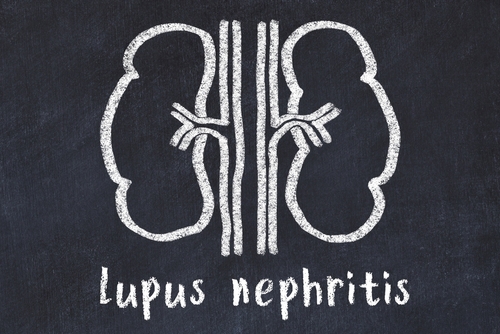
Patients with end-stage renal disease on maintenance dialysis have a high prevalence of mood disorders, most commonly depressive and anxiety disorders. When using a cutoff value in self-report questionnaires, the prevalence for anxiety symptoms ranges from 39% to 53%, and for depressive symptoms, the range is from 37% to 42%. These symptoms have an impact on a patient’s quality of life and may be associated with adverse medical outcomes.
A previous study among non-dialysis-dependent patients with chronic kidney disease showed a significant association between anxiety symptoms and mortality. Robbert W. Schouten, MSc, and colleagues recently conducted a study designed to examine the association between anxiety symptoms and mortality in a population of patients on dialysis. The researchers also sought to assess the association between anxiety and 1-year hospitalization rate and length of stay. For comparison purposes, the researchers also examined the association between depressive symptoms and adverse clinical outcomes. Results of the study were reported in the American Journal of Kidney Diseases [2019;74(2):158-166].
The study utilized data from DIVERS (Depression Related Factors and Outcomes in Dialysis Patients with Various Ethnicities and Races Study). DIVERS is an observational prospective cohort study conducted in The Netherlands from 10 dialysis centers between June 2012 and October 2016.
A total of 687 patients were included in the cohort. The cohort included prevalent (n=433; 64%) and incident dialysis patients (n=240; 36%). Median dialysis vintage among the prevalent patients was 13 months. Overall, mean age was 65 years, 62% were men, and 48% were immigrants. Maximum follow-up was 4 years; median follow-up was 3.1 years. Twenty-five percent of the participants (n=173) died during follow-up.
There were differences between the group with high anxiety symptoms and the group with low anxiety in immigrant status, prevalence of diabetes, depressive symptoms, and Mental Component Summary score on the 12-Item Short Form Health Survey (SF-12), a health-related quality of life questionnaire. There were no significant differences in social characteristics, vascular access, treatment modality, residual diuresis, and SF-12 Physical Component Summary score.
In predefined cutoff scores, 22% of patients had anxiety and 42% had depressive symptoms. Eighteen percent of patients had comorbid depressive and anxiety symptoms. The majority of patients with anxiety had depressive scores above the cutoff value. In the anxiety group, 27% of patients reported severe depressive symptoms. Measurements of anxiety and depression were taken after 6 months. In mixed-model analyses, there were no changes in Beck Depression Inventory (BDI) and Beck Anxiety Inventory (BAI) scores between the 6-month time points.
There was an association between anxiety and all-cause mortality. A 1-point greater BAI score was associated with a 5.1% greater risk for mortality (hazard ratio [HR], 1.051; 95% confidence interval [C I], 1.016-1.088; P=.004). The same trend was seen for depressive symptoms: each 1-point greater BDI score was associated with a 4.3% greater risk for all-cause mortality (HR, 1.043; 95% CI, 1.004-1.083; P=.03).
There were only minor changes in the HR when the model included confounders, including a large number of medical comorbid conditions. Results were similar in additional analyses using predefined cutoff values and the severity index of anxiety and depressive symptoms. Both anxiety and depressive symptoms had a dose response: there was an association between higher burden of symptoms and higher risk for all-cause mortality.
In both univariable and multivariable models, there were significant associations between anxiety and depressive symptoms and the number of hospitalizations and length of stay. A 1-point increase in either BAI or BDI score was associated with 1.8% greater 1-year hospitalization rate. Fifty-two percent of patients had at least one hospitalization during the first year of follow-up, and 16% had three or more hospitalizations in the first year of follow-up. Median hospital length of stay was 6 days.
Limitations to the findings included the overlap between depression and anxiety; the use of self-reported anxiety and depressive symptoms rather than a Diagnostic and Statistical Manual of Mental Disorders, Fourth Edition diagnosis; and missing data that may have impacted the generalizability of the findings.
“Anxiety symptoms are highly prevalent and independently associated with increased risk for mortality, hospital admission rate, and hospital length of stay,” the researchers said. “This study provides clinicians and researchers with an indication of the clinical significance of anxiety in dialysis patients. Future studies should take anxiety symptoms into account when investigating mental health in dialysis patients. More research is needed to identify effective treatments for anxiety symptoms and provide the clinicians with the evidence for practical guidelines.”
Takeaway Points
- Patients on dialysis often experience symptoms of anxiety and/or depression, leading to adverse clinical outcomes.
- In a prospective cohort study in The Netherlands, there was an association between a 1-point greater increase in Beck Anxiety Inventory score and a 5.1% greater risk for all-cause mortality.
- Anxiety was also associated with an increase in hospitalization rate and length of stay. Anxiety symptoms had a clear dose-response relationship with mortality.







 © 2025 Mashup Media, LLC, a Formedics Property. All Rights Reserved.
© 2025 Mashup Media, LLC, a Formedics Property. All Rights Reserved.